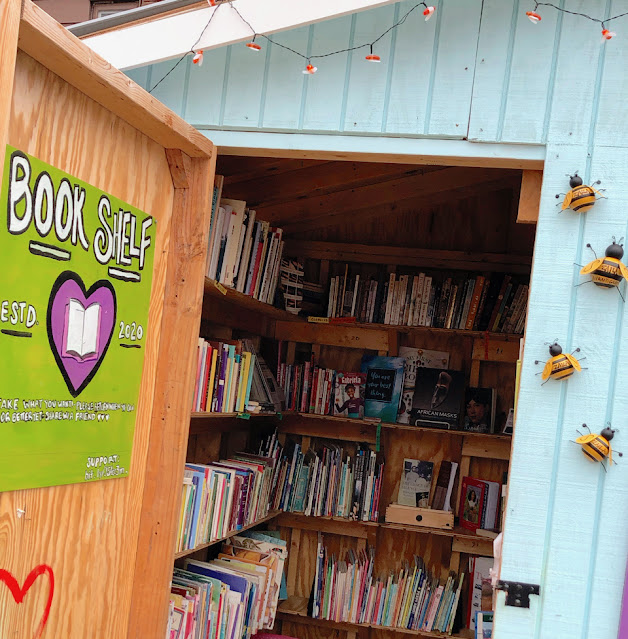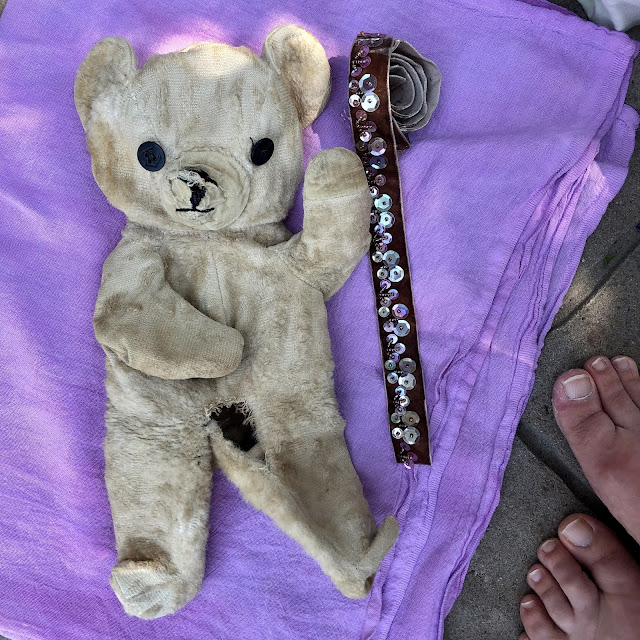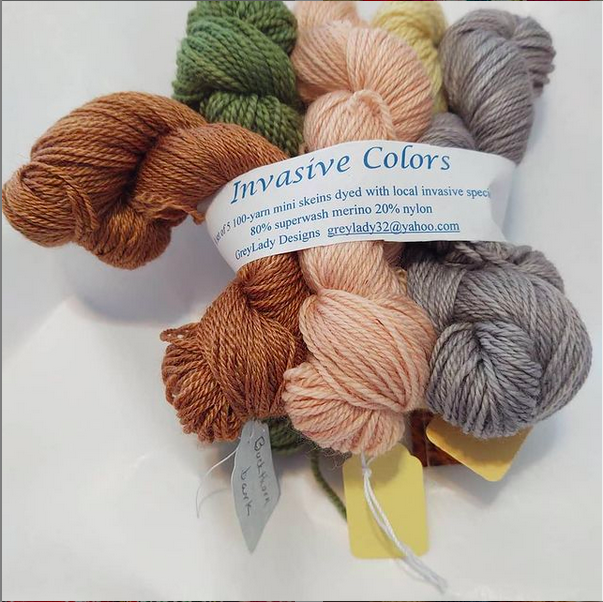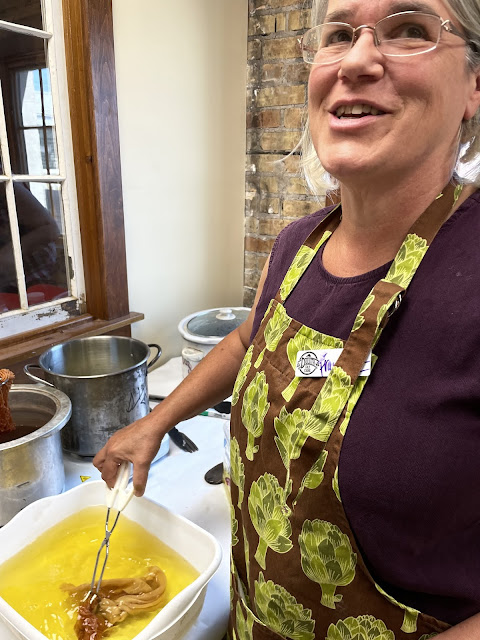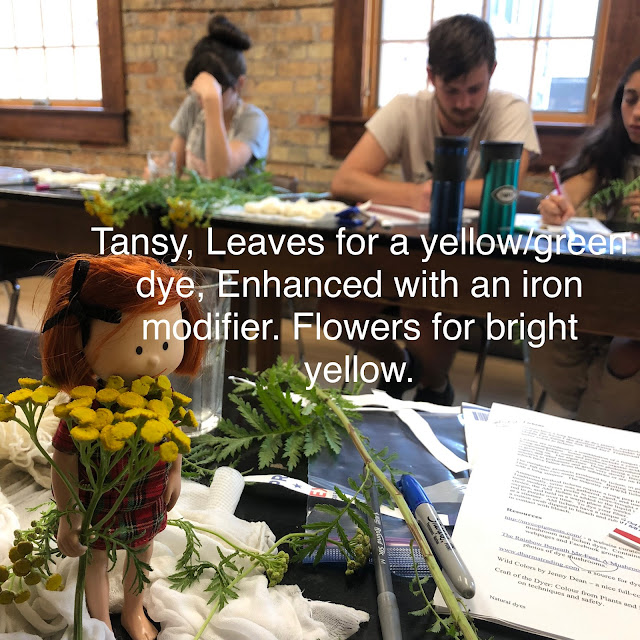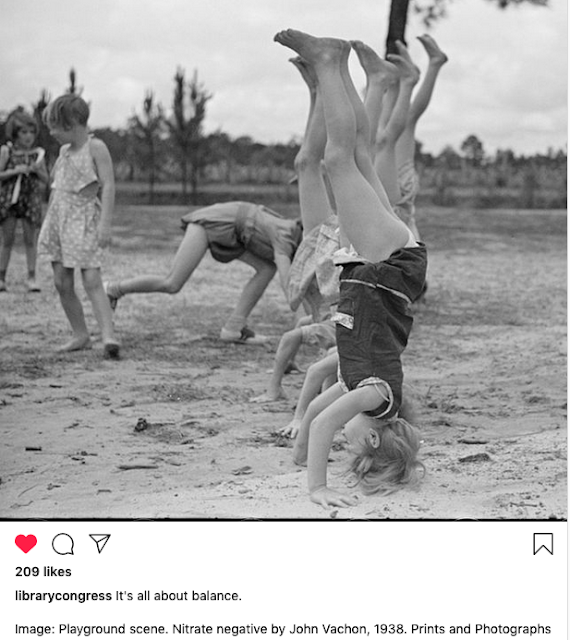A volunteer at the store says, 80 percent of people are neutral (he actually said "sheep", but that's too specific, and too negative);
10 percent are horrible;
and 10 percent are "absolutely wonderful". It's different for Orphan Reds:
100 percent of the girlettes are 100 percent wonderful, each in her own way.
Here, Sunny Khan has made herself a fascinator out of a grass seedhead by the creek.
I don't know that I agree with the volunteer's percentages...
Maybe I'd say each one of us, within ourselves, is 80/10/10?
(More like a bell curve actually.)
But, anyway, the volunteer sure caught the experience of working with others--customers and coworkers, etc.
Most people are fine, neutral.
It's the minority that can elevate or erode your peace of mind.
Glad / Enough
I've been having a hard time this summer staying on my feet, holding my ground, with how the world is, how my society is.
House sitting a few blocks from George Floyd Square, every day I think about his murder by agents of the State.
Working in a poor neighborhood next to a park where people live, I think about the affects of poverty every day.
It's disturbing, but the answer is not to pretend it doesn't exist, so I am sort of ... glad of being where I am?
NOT "glad" as in happy, but since these things do exist, having to face them, I'm ...mmm... how to put it?
Etymology of glad:
Old English glæd "bright, shining, gleaming; joy, gladness; pleasant, gracious...
Apparently the notion is of being radiant with joy;
the
modern sense "feeling pleasure or satisfaction" is much weakened."
Radiant with joy.
I like that, but definitely not that, here. Nor "feeling pleasure"---but, yes, maybe "feeling satisfaction".
SATISFY (v.): from Latin satisfacere "discharge fully, comply with, make amends,"
literally "do enough," from satis "enough" + facere "to make, do, perform".
The sense of being satisfied, not in the sense of feeling content, but in the sense of feeling enough... and having enough information:
"These things are happening, I want to know enough... and then do (respond) enough..."
You can never do enough, but you can do what you can do---which, is . . . what?
That takes some discerning! I'm feeling my way here, as if in a dark and unfamiliar room.
Having certain social realities in my face is hard--but how much harder it is to BE the person in the park, the person under the knee. (Or, for that matter, to be the person kneeling on another, or to be the person buying sex from a seller in the park.)
I've felt worn down, like many of us, eh? seeing and thinking about these desperate things.
Lift Up, Slow Down
I want to consciously work on figuring out what lifts me up, helps me to carry on.
Like the very act of asking, What helps me? (Not what helps me forget reality, but what helps me carry on and respond to it with some... grace? strength?)
DOLLS HELP.
Truly. They give me perspective, and joy.
Calming (slowing) down helps.
I read about a soccer player who improved her game by running more slowly, which took some practice.
Practice slowing down--emotionally.
I've been doing that lately.
I recently had lunch with a friend who has told me I rev too fast for her.
(Others have told me this too--"you're too intense".
It's a funny thing--I sleep twelve hours, but when I'm awake, I'm awake.)
At lunch, I consciously slowed way down--(in a nice, calm way, not a self-smothering way)--and we had a much better connection.
At the end of lunch––during which we'd talked about some of the hard realities we're seeing––she said, "This is hard stuff, but your energy seems really good."
Hey! Success.
I felt better afterward than I usually do when I've seen her. So slowing down buffered me too.
That works physically too.
Gym teacher (GT) and I'd talked about that--how deliberately slowing down exercise can help you get stronger and stay safer.
I'm not liking group gym class. It's fun in its way, but it's too much strength-building exercises and not enough reflection.
I do a LOT of lifting and pushing and pulling 20 hours/week at work. I don't want more of it, I want to practice doing it at work with more conscious intention. That's what the one-on-one meeting with GT were about--how to do that.
Maybe I'll go back to private meetings in August.
Little Things
Anyway... what I do, can do?
Not big, heavy hitting stuff. I am not going to be Dorothy Day and live in the park. (I thought about it, but it's just not in me.)
I talked to a woman at the store who's running for City Council, and not that kind of thing either (political engagement)--I felt like my head was going to droop right off.
It's most often little stuff I do.
Little, but stuff that takes some deliberation and action.
I was thinking, for instance, about how I could support my coworkers as we are facing intense situations again this summer.
(Last year at this time, we were cleaning up the store after the rioting/looting attending the social uprising for justice).
I liked the photo from the annual dinner, so I got it printed, posted one copy in the break room and gave out copies.
(I wish everyone were in the photo, but no one had planned a group shot, this was spontaneous, so it's just some of us. Next year I'll arrange a whole-group photo. Hm, or maybe sooner.)
Maybe that seems an obvious workplace thing to do, but it's not the norm where I work. There's very little deliberate support of staff (much less actual training).
A little act like printing up a photo can go a far way toward saying, I see you; we're in this together.
Also, a little fun, color. Play! Helps carry the load.
Why not enjoy life, since we're stuck here?
It’s an adventure.
The past year and a half since Covid came have challenged everybody, in some way. In some cases, this epoch was like a flood that swept us up and carried us downriver.
As the waters recede (for the moment), I'm wonder where we find ourselves. Where I find myself.
I don't know...








